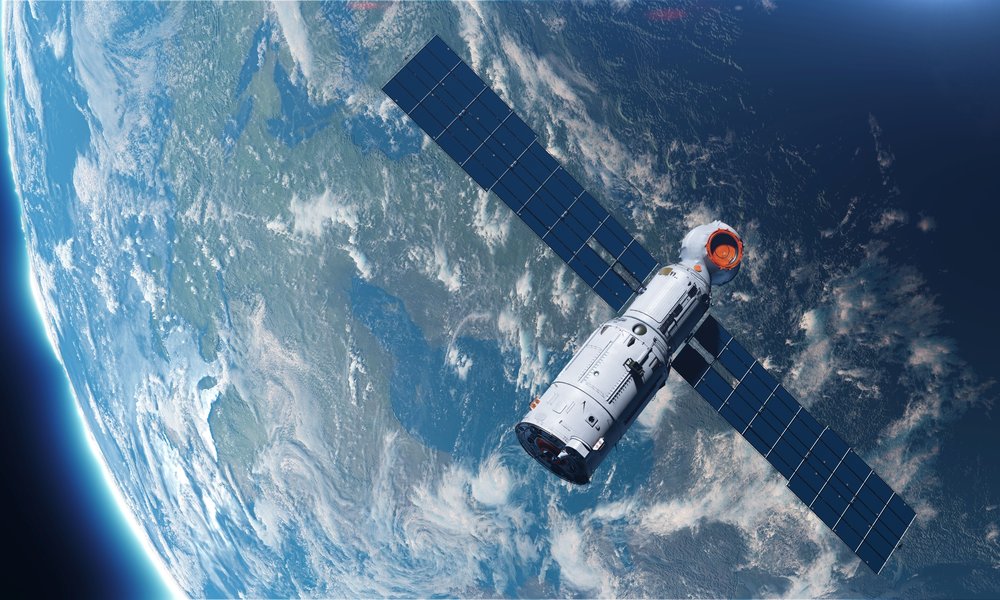The UNITe: Unified Network Integration for Terrestrial and Non-Terrestrial Communications - Phase II Catalyst is developing a seamless connectivity system for global supply chains. The solution is designed to enable continuous monitoring of cargo, reducing wastage, optimizing routes, improving security and enabling better regulatory compliance.

How to deliver truly global connectivity to supply chains
Commercial context
The integration of terrestrial cellular networks and satellite communication systems promises to deliver truly global connectivity, as cellular networks provide coverage in populated areas, while satellite systems extend it to more remote corners. But seamlessly merging these two distinct technologies presents significant challenges in terms of interoperability, handover management and maintaining consistent quality of service (QoS). While hybrid connectivity solutions exist today, they tend to be proprietary solutions that work in limited geographies.
The standards governing the integration of terrestrial and non-terrestrial networks are still evolving. But modern supply chains need continuous and seamless connectivity on land and at sea to work effectively. In the food industry, for example, in the absence of constant monitoring, produce worth millions can spoil in transit. Similarly, many medicines and vaccines must maintain precise temperatures - one tracking failure could render them useless.
The solution
To help address this need, the UNITe: Unified Network Integration for Terrestrial and Non-Terrestrial Communications - Phase II Catalyst is furthering the integration of terrestrial and non-terrestrial networks. Employing 3GPP standards and TM Forum frameworks, the Catalyst is now applying an integrated connectivity model to a practical application: global supply chain tracking.
The Catalyst is combining smart shipping containers, which can precisely monitor and control the temperature of cargo, with seamless interoperability between terrestrial and satellite networks. To fully integrate cellular and satellite networks, the Catalyst has developed an efficient handover management system that delivers uninterrupted connectivity. The solution’s scalable architecture is also designed to accommodate new communication technologies.
This unified communication platform enables smart logistics solutions to adjust transportation routes in real-time in response to traffic congestion, weather and other factors. The platform also supports instant alerts and real-time video feeds to ensure the security of high-value shipments.
Moreover, the smart containers’ connected sensors can collect and analyze data. This helps to prevent waste and ensure products arrive in good condition. Continuous data streams also allow for instant adjustments to temperature. This ensures that high-value perishables and specialty foods maintain optimal conditions throughout their journey. As well as preserving quality, this monitoring can extend shelf life, maximizing product value and minimizing waste.
The solution can authenticate handoff from one cold storage to another using the TM Forum’s Digital Identity Management APIs and connected tags, supported by AI. With seamless connectivity, supply chains can also benefit from automated, real-time compliance checks and quality control measures. A constant data stream can be used to ensure adherence to regulatory standards while also providing a detailed audit trail. Logistics companies can view this data via a real-time analytical dashboard that draws on a digital twin and predictive machine learning.
Application
The Catalyst uses route optimization, proactive maintenance scheduling and efficient resource allocation. Through these measures, they estimate supply chains can achieve cost reductions of up to 20%.
As per studies conducted in various industry trials, the Catalyst’s hybrid solution aims to maintain up to 99.9% data continuity, enabling it to predict potential route delays with up to 98% accuracy. This reliable connectivity also enables near real-time detection of cooling malfunctions, allowing for corrective measures to save relevant shipments. The solution also aims to increase cold chain sensor uptime, from 70%-75% to more than 98%, helping to reduce vaccine spoilage rates - from 7-10% to less than 1%. Furthermore, seamless connectivity virtually eliminates delivery delay disruptions, reducing service level agreement breaches by up to 95%.
The Catalyst believes real-time tracking and communication will enable pinpoint accuracy in logistics. This will ensure that high-value, perishable food items reach their destinations at the optimal time. As well as satisfying customers, this precision could open doors to premium markets where timing is crucial, directly boosting revenue potential.
Wider value
The solution is scalable and adaptable - it could, for example, be employed for utility-grid monitoring or remote site connectivity in the mining industry, or for emergency responses during natural disasters that damage terrestrial infrastructure. Reliable communication during emergencies can reduce downtime by up to 15-20%, minimizing revenue loss and operational disruptions, according to the Catalyst.
More broadly, the integration of satellite and cellular coverage could open up new markets and opportunities in underserved rural areas. For example, telemedicine services can improve healthcare access for rural residents, reducing healthcare costs and decreasing medical travel expenses. Meanwhile, employing connectivity to support agricultural best practices could increase crop yields, boosting farmers' income and productivity.
“In Phase II we are moving beyond vision to validation,” explains Jayshree Kottapalli, Head of Satcoms and Ubiquitous Connectivity at TCS. “Through this proof-of-concept we demonstrate how a seamless network can transform the global supply chain industry. By proving commercial viability and shaping hybrid connectivity, we step into an era of enhanced emergency response, improved regulatory compliance, reduced waste and new opportunities unlocked across industries.”